East-West Mind-Body? Thoughts on Unitive Medicine
This article was previously published in the North American Journal of Oriental Medicine (NAJOM). It is reprinted here with the kind permission of NAJOM.
Can we talk of mind-body medicine as being Eastern or Western? I suspect not, though in my opinion the traditional medicines of Asia are better positioned to offer a viable avenue to genuine mind-body unity. However, there have been pioneers in the West with valuable insights that can help us, if we want to move in this direction of mind-body unity. In this article I would like to explore the ideas of a few of these trailblazers: F.M. Alexander, Moshe Feldenkrais, and Alan Watts. I leave it for others to explore the ancient roots of Western culture, as there is plenty of evidence that this mind-body unity was once upon a time well established here. The work of Peter Kingsley is one place to start. And this leaves entirely aside the cultures of indigenous tribes of the Americas; they also saw only unity where we modern people now have to struggle to unite what we earlier separated.
In the West “mind-body” is a catch-all phrase that is much in vogue. Many medical clinics in the US advertise therapies that purport to bridge the mind-body divide: yoga, biofeedback, mindfulness-based stress reduction, various movement therapies… Other non-standard clinics offer Traditional East Asian Medicine (TEAM) as being authentically (w)holistic and, thus, the genuine way to connect mind and body. All this deserves closer inspection. It is easy to talk of mind-body, but to achieve a genuine mind-body unity is the work of a lifetime. It is a profound challenge to confront our ways of thinking-perceiving and then change them. Simply because we insert acupuncture needles into a patient’s body does not in any way mean we are practicing a (w)holistic medicine that bridges the mind-body split.
How did we come to the point in the first place where we saw the psychic as being distinct from the somatic? Descartes famously said: I think, therefore I am. According to this view, it is the thinking side of a human, the mind, that is primary. Not only is it primary, it is separate and distinct from the body. Once this Cartesian view was accepted in the West, there was no end to the difficulties that followed in its wake, and it was then but a short step to seeing nature simply as a repository of raw materials for our industrial engine. Any sense that nature is sacred and that we are fully in nature, not outside of it, is lost. This should be a lesson to us to consider carefully the core propositions upon which we base our culture.
An Inseparable Whole
Movement is life. Life is a process. Improve the quality of the process and you improve the quality of life itself. Moshe Feldenkrais
I believe that the unity of mind and body is an objective reality. They are not just parts somehow related to each other, but an inseparable whole while functioning. A brain without a body could not think. Moshe Feldenkrais
A radically (radix means “root”) different view from the Cartesian perspective was offered by Moshe Feldenkrais, Ph.D. when he observed that a brain without a body was inconceivable, that it is in movement (of the body) that we identify the essential element of life. A brain without a body that moves, even if only in a limited way, would not be able to think, would be unable to encounter the world. We require these sorts of meetings rooted in movement for our nervous system to properly develop. Without interfacing with the world through our nervous system we would have no access to language, and words would be meaningless.
I was shocked some years back when I heard Alan Watts, one of the early popularizers of Zen and Taoism, maintain that the ego was a pattern of muscular tension. I had to listen again to make sure I had heard him correctly. The ego, a pattern of muscular tension? My own view of the ego was completely different. I checked online and found that the accepted definitions of ego did not support his view and did support what I was thinking:
- a person's sense of self-esteem or self-importance.
- the part of the mind that mediates between the conscious and the unconscious and is responsible for reality testing and a sense of personal identity.
The differences between these two views is striking. The online definitions ignore the somatic element entirely, while the one from Watts focuses completely on the somatic pattern of tension. Just as all of us have a unique ego expression, we all have unique patterns of muscular tension in our bodies. Our habits of movement and thought create these muscular patterns. See the quotes below from F. M. Alexander and note how they support Watts in his views. Alexander, like Feldenkrais an early pioneer of a genuine mind-body approach in the West observed much the same about the ego:
"You translate everything, whether physical, mental or spiritual, into muscular tension." F.M. Alexander
"People do not decide their futures, they decide their habits and their habits decide their futures." F.M. Alexander
It should be pointed out that likely neither Feldenkrais nor Alexander would have much liked the term mind-body, because we are already in this phrase accepting the two phenomena as separate. Our language virtually forces us to do this sort of phrasing. We see a “mind” as somehow distinct from a “body,” and we see a need to unify them through some strategy. Both Alexander and Feldenkrais instead simply saw a unity; Alexander called it the “Self” and spoke of our “Use of Self” instead of mind-body unity. Alexander’s “Use of Self” included the physical and the mental-psychological-emotional. The work of both of these geniuses has had a profound influence on my acupuncture practice, albeit in indirect ways, but then the indirect way is often the most powerful.
What precisely have I carried over from these two teachers into my practice? I actually practice the work of neither of these geniuses, but their perspective on life has had a significant influence on how I see my work. To watch both of these men work was to watch the most refined touch, to see the most minimalistic interventions produce fundamental changes in the body-mind. This has been a big inspiration for me in my own work in Japanese acupuncture styles. They confirm for me from a Western perspective that “less is more.”
In our Traditional East Asian Medicine (TEAM) we have many ways to understand the deeper pattern imbalances of our patients. We might use yin-yang theory, five-phase theory, san jiao theory, or any of a number of other filters. Always we are seeking to understand our patients at a deeper level. This is quite different from modern biomedicine where lab reports, standards of care, and the constellation of signs and symptoms completely drive treatment strategizing.
But in TEAM we also put our hands on the bodies of our patients to discover layers of meaning. A wealth of information is available in this hands-on approach, but it takes a real investment of time and attention to nourish this capacity in us, in our hands. To investigate a genuine mind-body unity one needs to do real personal work, to delve into our belief structures and how we are comfortable thinking. We are as habitual and reflexive in our thought processes as we are in our movement patterns. Without a searching reflection one has no hope of achieving escape velocity from the consensus view of reality that is still so collectively dominated by the Cartesian split of mind and matter.
Many patients come to our clinics complaining that when they visit their doctor, they sit on one side of a desk and their doctor on the other side, and no touch ever occurs. I find that sad, even tragic. I think in many Japanese acupuncture styles, more so than in any other Asian country, we find palpation raised to an inspiring level. Perhaps this is due to the confluence of unique cultural factors in Japan together with the influence of centuries of blind practitioners and their refined palpatory sensibilities.
When Funamizu Takahiro visited our university five years ago to teach a class in the treatment of mental-emotional conditions, the first point he made to the students was that they had to start with the patient’s body itself, not with their words, though of course he was not advising the students to ignore what the patient reports. But their bodies cannot lie—if we know how to read the story written in the tissues. It was said of Feldenkrais, for instance, that he could look at a stranger across a room and watch them move a little, and from this scant information he could tell you quite a lot about that person and what their life had been like. This is the body and its movements as language, just as nature itself to all systems of traditional medicine was seen as alive with symbolic meaning. TEAM in its roots is rich in this view. One of my main mentors in herbal medicine and Chinese cosmology, Heiner Fruehauf, Ph.D., is famous for teaching that Chinese Medicine is an ancient symbol science, i.e., at its highest level to study Chinese Medicine is to learn to think symbolically.
TEAM holds the possibility of a truly unitive medicine (at least potentially)—unitive medicine might in fact be a better phrase than “mind-body medicine.”. My doctoral capstone writing was on the topic of “Wholeness in Traditional East Asian Medicine,” which is to say that this is a topic near and dear to my heart. But I caution against hopping on the current mind-body bandwagon without really assessing what we are doing. Our medicine is genuinely unitive when practiced at the level of the superior physician. It is up to us practitioners to cultivate and elevate our perceptual and treatment skills, so that we bring to our patients this genuinely unitive approach.
Courses By This Teacher
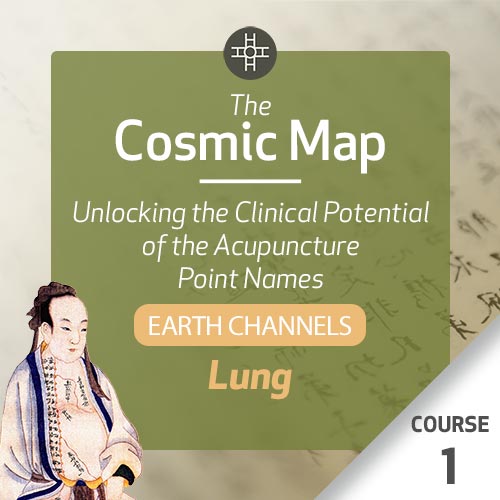
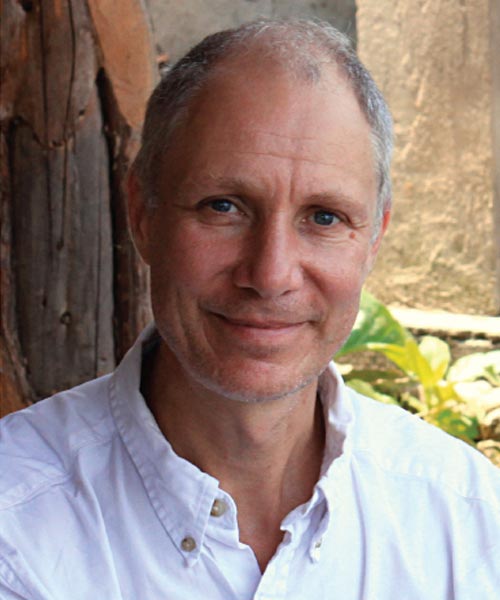
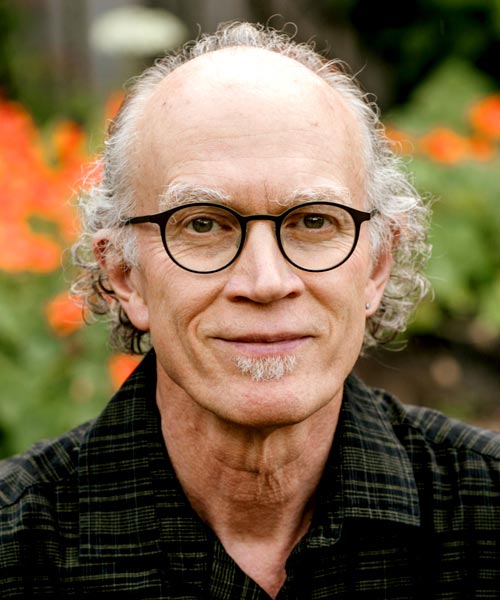
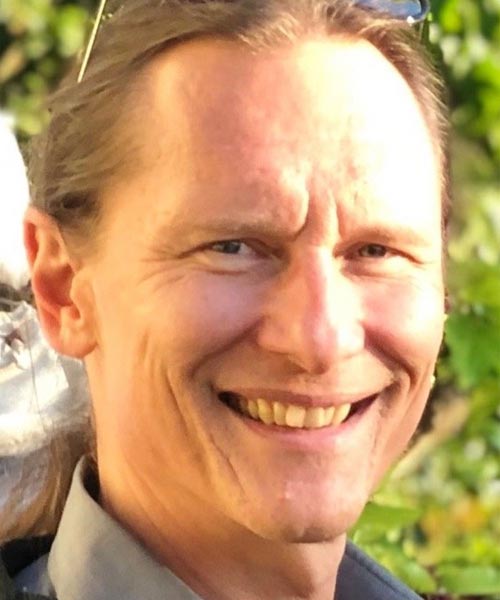
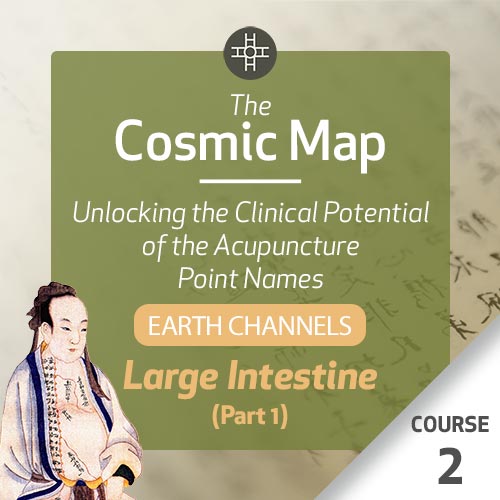



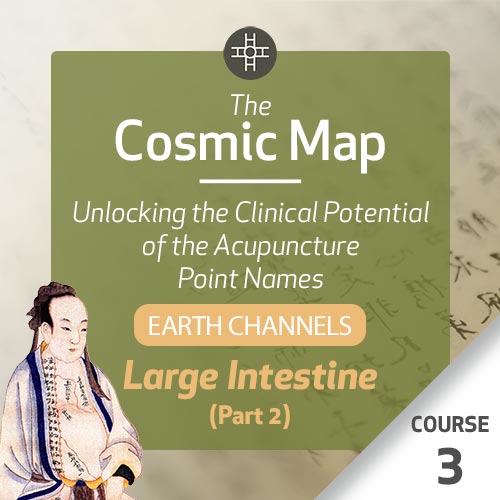



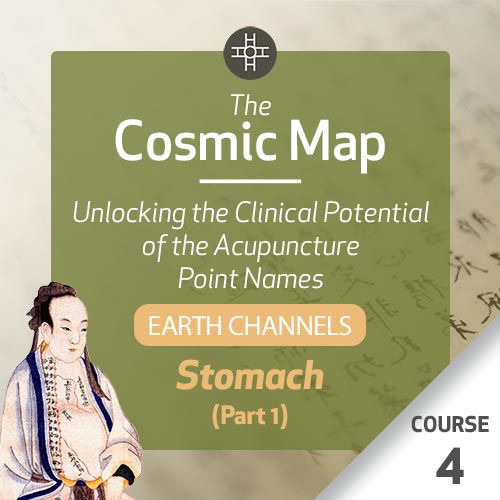



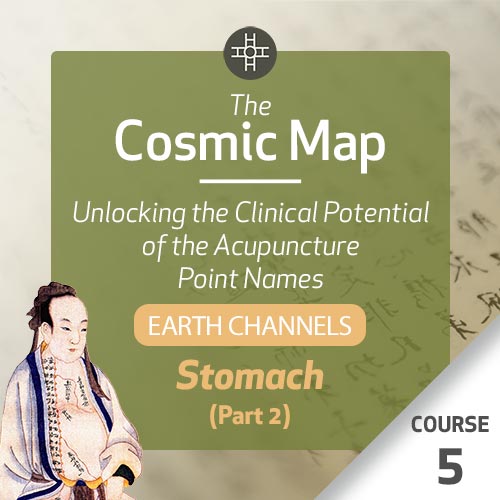



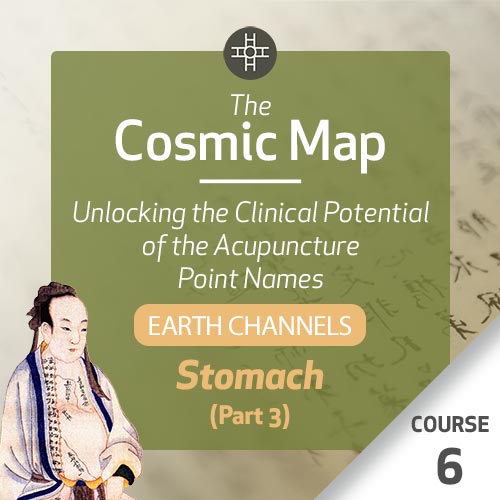



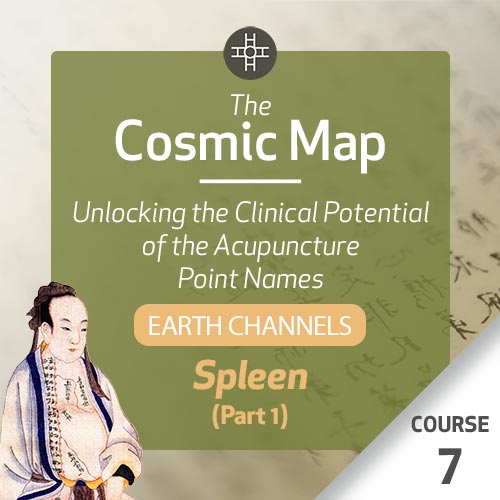



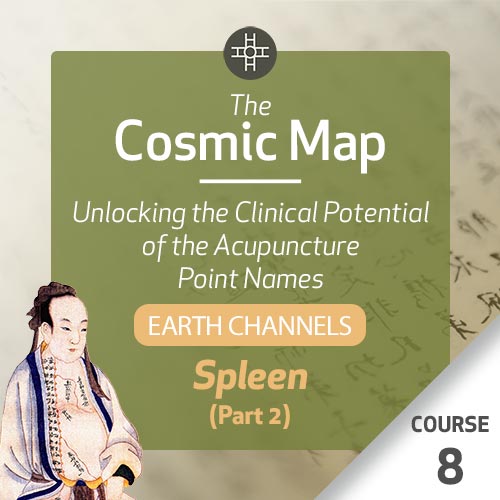



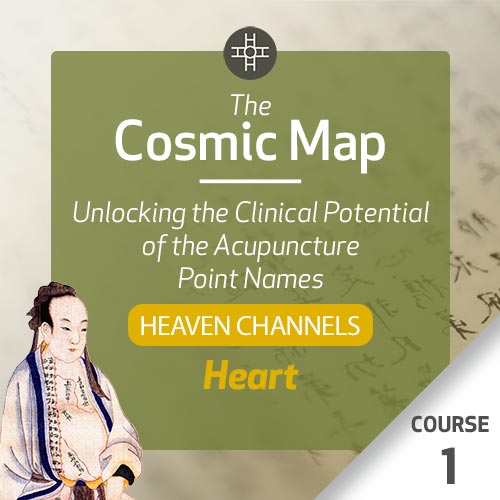



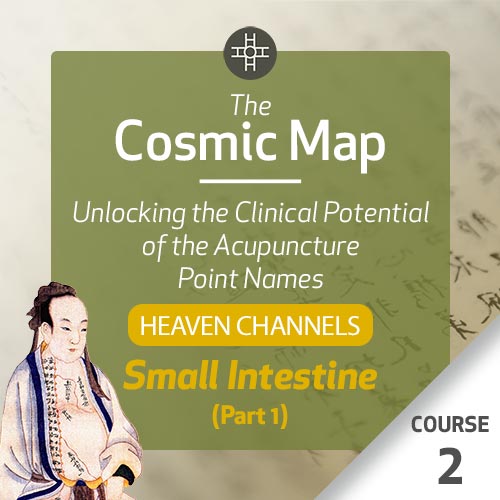



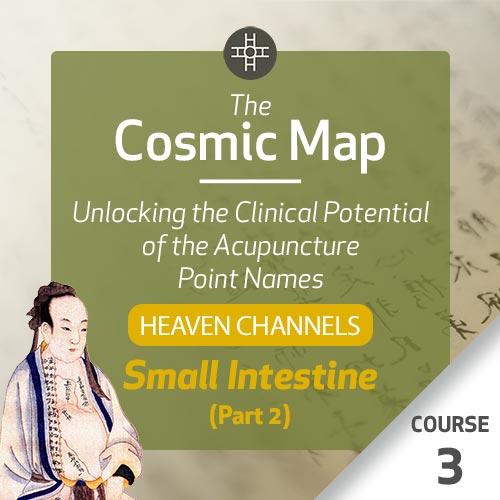



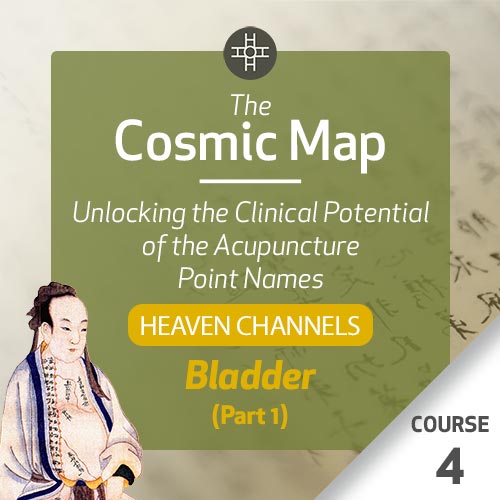



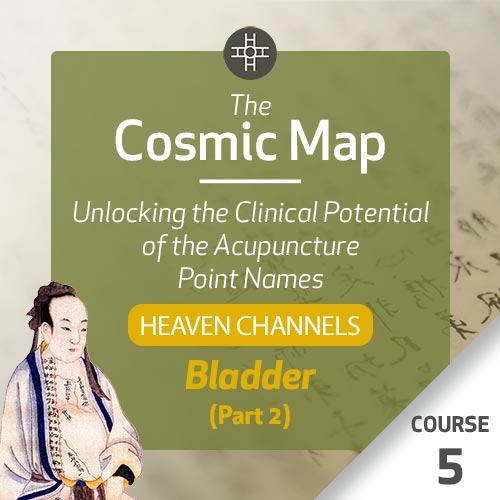



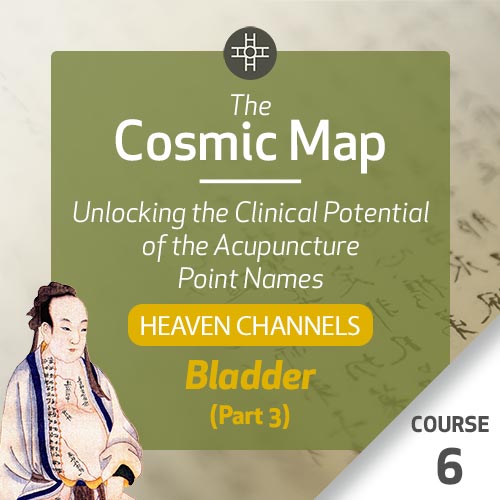



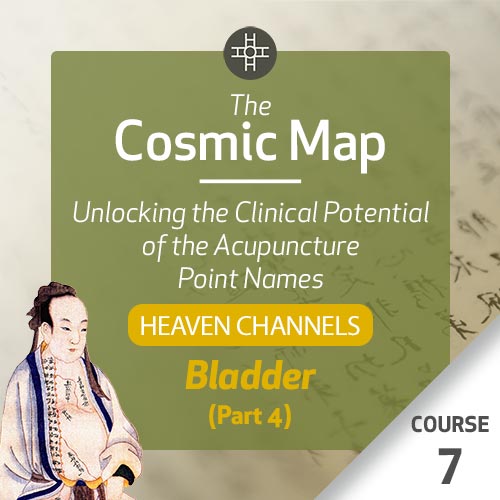



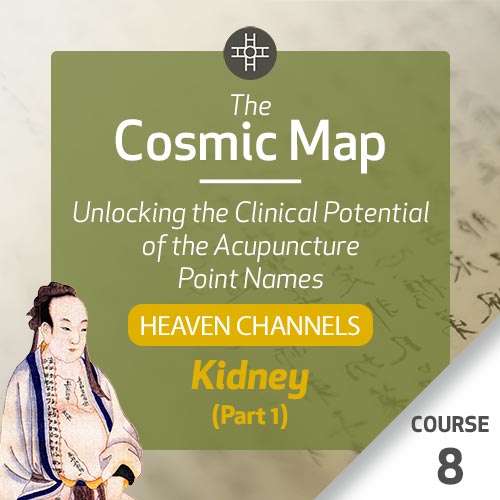



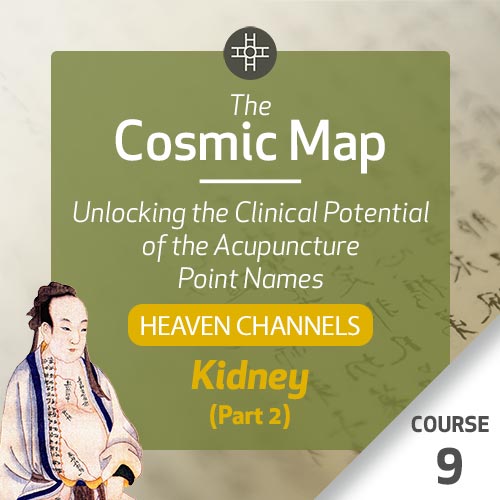



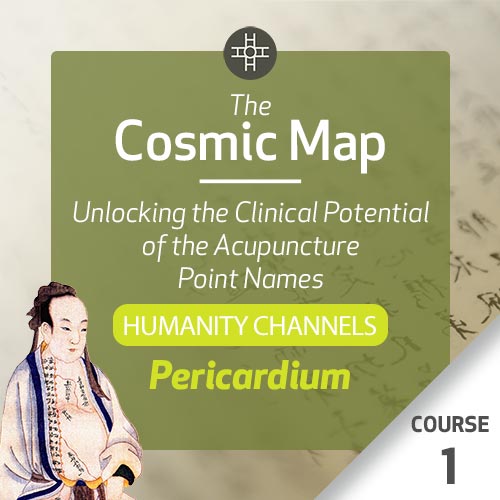



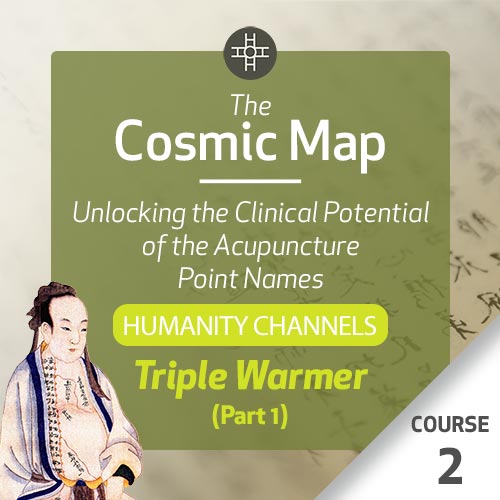



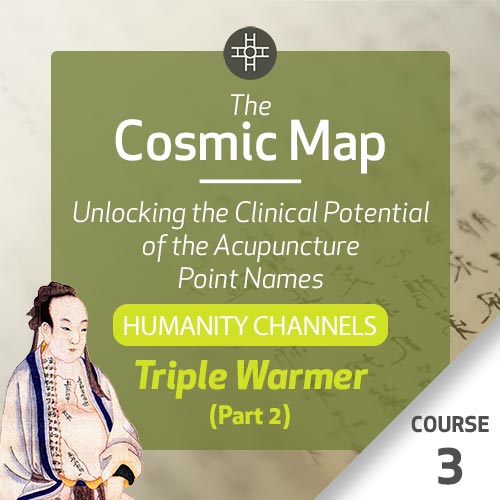



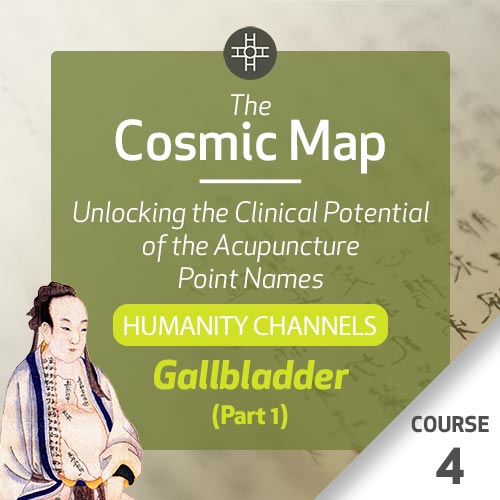



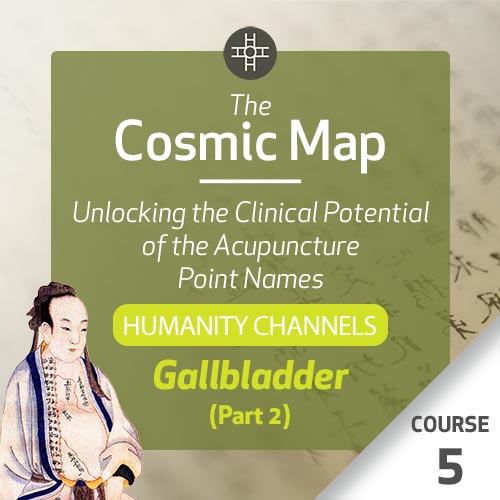



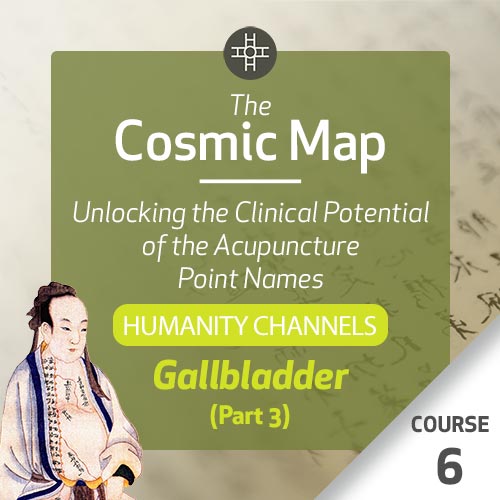



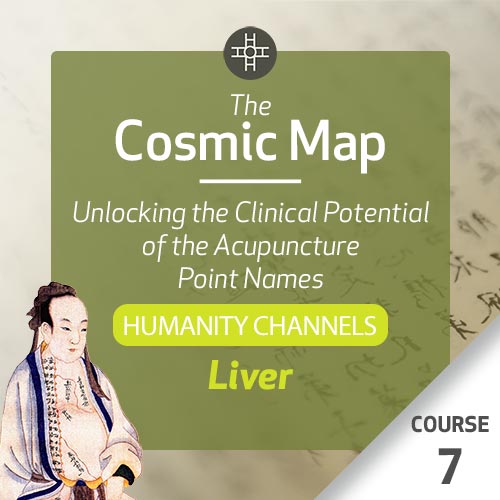



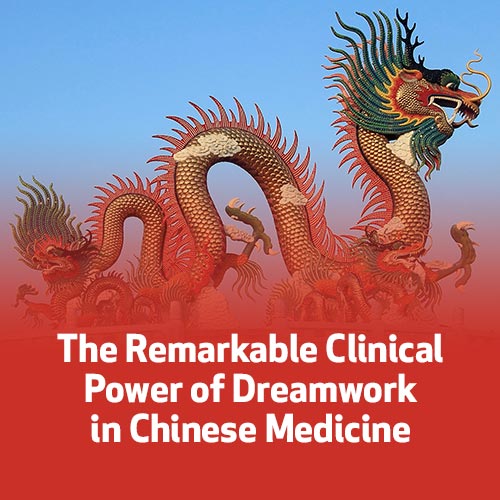
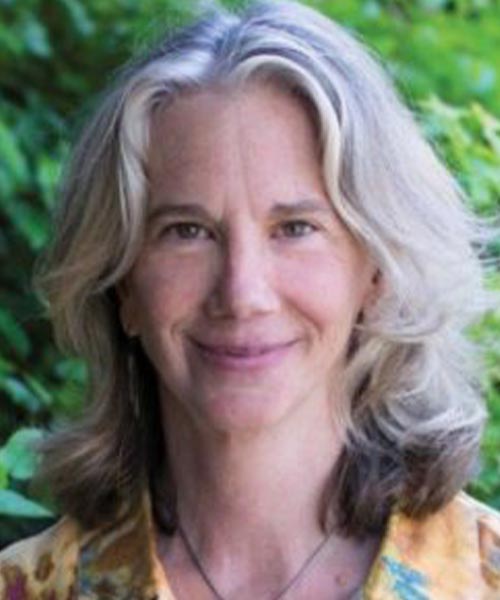



The Cosmic Map: Unlocking the Clinical Potential of the Acupuncture Point Names, Part 1: Earth Channels - Course 1
Lung
with Bob Quinn
See In StoreOverview
This course is designed to further the lifelong learner’s journey as they deepen their mastery of acupuncture point selections based on the profound information embedded in their classical names. Seasoned practitioners, students, and laypeople will all find value in this course.
Heiner Fruehauf will analyze the original meaning of each point name on the Lung channel in its multilayered complexity. The ancient acupuncture point names not only serve as mnemonic reminders about the location of each point, but also contain significant information revealing the unique energetic qualities and highly specific physiology and pathology of each point.
Heiner will tease out each layer of meaning through multiple translations. Relevant clinical context will be provided by the presentation of case examples or experience-based comments by senior acupuncturists Bob Quinn and Michael Berletich.
Heiner will share decades of research into the nuanced qualities of the acupuncture points, and instill in participants a tangible feel for their unique nature and energetic qualities.
With this base of knowledge, participants can stand on firm ground while being flexible in their ability to more deeply understand and select acupuncture points that can effectively treat the complex physical, mental/emotional and spiritual issues we encounter in our out-of-balance world.
Learning Objectives
- Elucidate the symbolism and story of the ancient acupuncture point names that serve as mnemonic reminders about their location, contain significant information, and reveal their unique energetic qualities and highly specific physiology and pathology.
- Describe the symbolic nature of the Lung channel and analyze the original meaning of the organ, meridian and point names in all their multilayered complexity including the cosmologic, energetic and physical viewpoints.
- Present the points of the Lung meridian so participants can understand how to hone their ability to select the most suitable points to effectively treat complex physical, mental/emotional and spiritual issues we encounter in our out-of-balance world.
- Discuss the physiologic actions, pathologic presentations and clinical applications of the Lung point represented by their name translations and their classical text indications with clinical and case examples.
Your Teachers

Heiner Fruehauf
Heiner Fruehauf is the Founding Professor of the College of Classical Chinese Medicine at National University of Natural Medicine (NUNM) in Portland, Oregon. As a practitioner, Dr. Fruehauf focuses on the complementary treatment of difficult and recalcitrant diseases, including cancer, chronic respiratory and digestive disorders, and inflammation of the nervous system.

Bob Quinn
Bob Quinn, DAOM, L.Ac. has been a full-time Associate Professor of Chinese Medicine at National University of Natural Medicine in Portland since 2009; before that, he taught and supervised at the Oregon College of Oriental Medicine. He first entered acupuncture practice in 1998 with a master’s degree from OCOM, and later returned to earn his doctoral degree in Chinese medicine in 2008.

Michael Berletich
Dr. Michael Berletich has been teaching for over 30 years. He received his Masters in Chinese Medicine (2005) and his clinical Doctorate in Chinese medicine (2016) from OCOM. He's worked the past 23 years as Professor, Clinician, Department Chair and Dean. He also maintains a busy private practice.
Categories
Tags
The Cosmic Map: Unlocking the Clinical Potential of the Acupuncture Point Names, Part 1: Earth Channels - Course 2
Large Intestine Part 1
with Bob Quinn
See In StoreOverview
This course is designed to further the lifelong learners’ journey as they deepen their mastery of acupuncture point selections based on the profound information embedded in their classical names. Seasoned practitioners, students, and laypeople will all find value in this course.
Heiner Fruehauf will analyze the original meaning of each point name on the Large Intestine channel in its multilayered complexity. The ancient acupuncture point names not only serve as mnemonic reminders about the location of each point, but also contain significant information revealing the unique energetic qualities and highly specific physiology and pathology of each point.
Heiner will tease out each layer of meaning through multiple translations. Relevant clinical context will be provided by the presentation of case examples or experience-based comments by senior acupuncturists Bob Quinn and Michael Berletich.
Heiner will share decades of research into the nuanced qualities of the acupuncture points, and instill in participants a tangible feel for their unique nature and energetic qualities.
With this base of knowledge, participants can stand on firm ground while being flexible in their ability to more deeply understand and select acupuncture points that can effectively treat the complex physical, mental/emotional and spiritual issues we encounter in our out-of-balance world.
Learning Objectives
- Present Large Intestine points so participants can understand how to hone their ability to select the most suitable points to effectively treat complex physical, mental/emotional and spiritual issues we encounter in our out-of-balance world.
- Discuss the physiologic actions, pathologic presentations and clinical applications of the Large Intestine point represented by their name translations and their classical text indications with clinical and case examples
- Elucidate the symbolism and story of the ancient acupuncture point names that serve as mnemonic reminders about their location, contain significant information, and reveal their unique energetic qualities and highly specific physiology and pathology
- Describe the symbolic nature of the Large Intestine channel and analyze the original meaning of the organ, meridian and point names in all their multilayered complexity including the cosmologic, energetic and physical viewpoints
Your Teachers

Bob Quinn
Bob Quinn, DAOM, L.Ac. has been a full-time Associate Professor of Chinese Medicine at National University of Natural Medicine in Portland since 2009; before that, he taught and supervised at the Oregon College of Oriental Medicine. He first entered acupuncture practice in 1998 with a master’s degree from OCOM, and later returned to earn his doctoral degree in Chinese medicine in 2008.

Heiner Fruehauf
Heiner Fruehauf is the Founding Professor of the College of Classical Chinese Medicine at National University of Natural Medicine (NUNM) in Portland, Oregon. As a practitioner, Dr. Fruehauf focuses on the complementary treatment of difficult and recalcitrant diseases, including cancer, chronic respiratory and digestive disorders, and inflammation of the nervous system.

Michael Berletich
Dr. Michael Berletich has been teaching for over 30 years. He received his Masters in Chinese Medicine (2005) and his clinical Doctorate in Chinese medicine (2016) from OCOM. He's worked the past 23 years as Professor, Clinician, Department Chair and Dean. He also maintains a busy private practice.
Categories
Tags
The Cosmic Map: Unlocking the Clinical Potential of the Acupuncture Point Names, Part 1: Earth Channels - Course 3
Large Intestine Part 2
with Bob Quinn
See In StoreOverview
This course is designed to further the lifelong learners’ journey as they deepen their mastery of acupuncture point selections based on the profound information embedded in their classical names. Seasoned practitioners, students, and laypeople will all find value in this course.
Heiner Fruehauf will analyze the original meaning of each point name on the Large Intestine channel in its multilayered complexity. The ancient acupuncture point names not only serve as mnemonic reminders about the location of each point, but also contain significant information revealing the unique energetic qualities and highly specific physiology and pathology of each point.
Heiner will tease out each layer of meaning through multiple translations. Relevant clinical context will be provided by the presentation of case examples or experience-based comments by senior acupuncturists Bob Quinn and Michael Berletich.
Heiner will share decades of research into the nuanced qualities of the acupuncture points, and instill in participants a tangible feel for their unique nature and energetic qualities.
With this base of knowledge, participants can stand on firm ground while being flexible in their ability to more deeply understand and select acupuncture points that can effectively treat the complex physical, mental/emotional and spiritual issues we encounter in our out-of-balance world.
Learning Objectives
- Discuss the physiologic actions, pathologic presentations and clinical applications of the Large Intestine point represented by their name translations and their classical text indications with clinical and case examples
- Present Large Intestine points so participants can understand how to hone their ability to select the most suitable points to effectively treat complex physical, mental/emotional and spiritual issues we encounter in our out-of-balance world.
- Elucidate the symbolism and story of the ancient acupuncture point names that serve as mnemonic reminders about their location, contain significant information, and reveal their unique energetic qualities and highly specific physiology and pathology
- Describe the symbolic nature of the Large Intestine channel and analyze the original meaning of the organ, meridian and point names in all their multilayered complexity including the cosmologic, energetic and physical viewpoints
Your Teachers

Michael Berletich
Dr. Michael Berletich has been teaching for over 30 years. He received his Masters in Chinese Medicine (2005) and his clinical Doctorate in Chinese medicine (2016) from OCOM. He's worked the past 23 years as Professor, Clinician, Department Chair and Dean. He also maintains a busy private practice.

Bob Quinn
Bob Quinn, DAOM, L.Ac. has been a full-time Associate Professor of Chinese Medicine at National University of Natural Medicine in Portland since 2009; before that, he taught and supervised at the Oregon College of Oriental Medicine. He first entered acupuncture practice in 1998 with a master’s degree from OCOM, and later returned to earn his doctoral degree in Chinese medicine in 2008.

Heiner Fruehauf
Heiner Fruehauf is the Founding Professor of the College of Classical Chinese Medicine at National University of Natural Medicine (NUNM) in Portland, Oregon. As a practitioner, Dr. Fruehauf focuses on the complementary treatment of difficult and recalcitrant diseases, including cancer, chronic respiratory and digestive disorders, and inflammation of the nervous system.
Categories
Tags
The Cosmic Map: Unlocking the Clinical Potential of the Acupuncture Point Names, Part 1: Earth Channels - Course 4
Stomach Part 1
with Bob Quinn
See In StoreOverview
This course is designed to further the lifelong learner’s journey as they deepen their mastery of acupuncture point selections based on the profound information embedded in their classical names. Seasoned practitioners, students, and laypeople will all find value in this course.
Heiner Fruehauf will analyze the original meaning of each point name on the Stomach channel in its multilayered complexity. The ancient acupuncture point names not only serve as mnemonic reminders about the location of each point, but also contain significant information revealing the unique energetic qualities and highly specific physiology and pathology of each point.
Heiner will tease out each layer of meaning through multiple translations. Relevant clinical context will be provided by the presentation of case examples or experience-based comments by senior acupuncturists Bob Quinn and Michael Berletich.
Heiner will share decades of research into the nuanced qualities of the acupuncture points, and instill in participants a tangible feel for their unique nature and energetic qualities.
With this base of knowledge, participants can stand on firm ground while being flexible in their ability to more deeply understand and select acupuncture points that can effectively treat the complex physical, mental/emotional and spiritual issues we encounter in our out-of-balance world.
Learning Objectives
- Present Stomach points so participants can understand how to hone their ability to select the most suitable points to effectively treat complex physical, mental/emotional and spiritual issues we encounter in our out-of-balance world.
- Discuss the physiologic actions, pathologic presentations and clinical applications of the Stomach points represented by their name translations and their classical text indications with clinical and case examples
- Describe the symbolic nature of the Stomach channel and analyze the original meaning of the organ, meridian and point names in all their multilayered complexity including the cosmologic, energetic and physical viewpoints
- Elucidate the symbolism and story of the ancient acupuncture point names that serve as mnemonic reminders about their location, contain significant information, and reveal their unique energetic qualities and highly specific physiology and pathology
Your Teachers

Michael Berletich
Dr. Michael Berletich has been teaching for over 30 years. He received his Masters in Chinese Medicine (2005) and his clinical Doctorate in Chinese medicine (2016) from OCOM. He's worked the past 23 years as Professor, Clinician, Department Chair and Dean. He also maintains a busy private practice.

Heiner Fruehauf
Heiner Fruehauf is the Founding Professor of the College of Classical Chinese Medicine at National University of Natural Medicine (NUNM) in Portland, Oregon. As a practitioner, Dr. Fruehauf focuses on the complementary treatment of difficult and recalcitrant diseases, including cancer, chronic respiratory and digestive disorders, and inflammation of the nervous system.

Bob Quinn
Bob Quinn, DAOM, L.Ac. has been a full-time Associate Professor of Chinese Medicine at National University of Natural Medicine in Portland since 2009; before that, he taught and supervised at the Oregon College of Oriental Medicine. He first entered acupuncture practice in 1998 with a master’s degree from OCOM, and later returned to earn his doctoral degree in Chinese medicine in 2008.
Categories
Tags
The Cosmic Map: Unlocking the Clinical Potential of the Acupuncture Point Names, Part 1: Earth Channels - Course 5
Stomach Part 2
with Bob Quinn
See In StoreOverview
This course is designed to further the lifelong learner’s journey as they deepen their mastery of acupuncture point selections based on the profound information embedded in their classical names. Seasoned practitioners, students, and laypeople will all find value in this course.
Heiner Fruehauf will analyze the original meaning of each point name on the Stomach channel in its multilayered complexity. The ancient acupuncture point names not only serve as mnemonic reminders about the location of each point, but also contain significant information revealing the unique energetic qualities and highly specific physiology and pathology of each point.
Heiner will tease out each layer of meaning through multiple translations. Relevant clinical context will be provided by the presentation of case examples or experience-based comments by senior acupuncturists Bob Quinn and Michael Berletich.
Heiner will share decades of research into the nuanced qualities of the acupuncture points, and instill in participants a tangible feel for their unique nature and energetic qualities.
With this base of knowledge, participants can stand on firm ground while being flexible in their ability to more deeply understand and select acupuncture points that can effectively treat the complex physical, mental/emotional and spiritual issues we encounter in our out-of-balance world.
Learning Objectives
- Present Stomach points so participants can understand how to hone their ability to select the most suitable points to effectively treat complex physical, mental/emotional and spiritual issues we encounter in our out-of-balance world.
- Elucidate the symbolism and story of the ancient acupuncture point names that serve as mnemonic reminders about their location, contain significant information, and reveal their unique energetic qualities and highly specific physiology and pathology.
- Discuss the physiologic actions, pathologic presentations and clinical applications of the Stomach points represented by their name translations and their classical text indications with clinical and case examples.
- Describe the symbolic nature of the Stomach channel and analyze the original meaning of the organ, meridian and point names in all their multilayered complexity including the cosmologic, energetic and physical viewpoints.
Your Teachers

Bob Quinn
Bob Quinn, DAOM, L.Ac. has been a full-time Associate Professor of Chinese Medicine at National University of Natural Medicine in Portland since 2009; before that, he taught and supervised at the Oregon College of Oriental Medicine. He first entered acupuncture practice in 1998 with a master’s degree from OCOM, and later returned to earn his doctoral degree in Chinese medicine in 2008.

Michael Berletich
Dr. Michael Berletich has been teaching for over 30 years. He received his Masters in Chinese Medicine (2005) and his clinical Doctorate in Chinese medicine (2016) from OCOM. He's worked the past 23 years as Professor, Clinician, Department Chair and Dean. He also maintains a busy private practice.

Heiner Fruehauf
Heiner Fruehauf is the Founding Professor of the College of Classical Chinese Medicine at National University of Natural Medicine (NUNM) in Portland, Oregon. As a practitioner, Dr. Fruehauf focuses on the complementary treatment of difficult and recalcitrant diseases, including cancer, chronic respiratory and digestive disorders, and inflammation of the nervous system.
Categories
Tags
The Cosmic Map: Unlocking the Clinical Potential of the Acupuncture Point Names, Part 1: Earth Channels - Course 6
Stomach Part 3
with Bob Quinn
See In StoreOverview
This course is designed to further the lifelong learner’s journey as they deepen their mastery of acupuncture point selections based on the profound information embedded in their classical names. Seasoned practitioners, students, and laypeople will all find value in this course.
Heiner Fruehauf will analyze the original meaning of each point name on the Stomach channel in its multilayered complexity. The ancient acupuncture point names not only serve as mnemonic reminders about the location of each point, but also contain significant information revealing the unique energetic qualities and highly specific physiology and pathology of each point.
Learning Objectives
- Present Stomach points so participants can understand how to hone their ability to select the most suitable points to effectively treat complex physical, mental/emotional and spiritual issues we encounter in our out-of-balance world.
- Elucidate the symbolism and story of the ancient acupuncture point names that serve as mnemonic reminders about their location, contain significant information, and reveal their unique energetic qualities and highly specific physiology and pathology.
- Discuss the physiologic actions, pathologic presentations and clinical applications of the Stomach points represented by their name translations and their classical text indications with clinical and case examples.
- Describe the symbolic nature of the Stomach channel and analyze the original meaning of the organ, meridian and point names in all their multilayered complexity including the cosmologic, energetic and physical viewpoints.
Your Teachers

Bob Quinn
Bob Quinn, DAOM, L.Ac. has been a full-time Associate Professor of Chinese Medicine at National University of Natural Medicine in Portland since 2009; before that, he taught and supervised at the Oregon College of Oriental Medicine. He first entered acupuncture practice in 1998 with a master’s degree from OCOM, and later returned to earn his doctoral degree in Chinese medicine in 2008.

Michael Berletich
Dr. Michael Berletich has been teaching for over 30 years. He received his Masters in Chinese Medicine (2005) and his clinical Doctorate in Chinese medicine (2016) from OCOM. He's worked the past 23 years as Professor, Clinician, Department Chair and Dean. He also maintains a busy private practice.

Heiner Fruehauf
Heiner Fruehauf is the Founding Professor of the College of Classical Chinese Medicine at National University of Natural Medicine (NUNM) in Portland, Oregon. As a practitioner, Dr. Fruehauf focuses on the complementary treatment of difficult and recalcitrant diseases, including cancer, chronic respiratory and digestive disorders, and inflammation of the nervous system.
Categories
Tags
The Cosmic Map: Unlocking the Clinical Potential of the Acupuncture Point Names, Part 1: Earth Channels - Course 7
Spleen Part 1
with Bob Quinn
See In StoreOverview
This course is designed to further the lifelong learner’s journey as they deepen their mastery of acupuncture point selections based on the profound information embedded in their classical names. Seasoned practitioners, students, and laypeople will all find value in this course.
Heiner Fruehauf will analyze the original meaning of each point name on the Spleen channel in its multilayered complexity. The ancient acupuncture point names not only serve as mnemonic reminders about the location of each point, but also contain significant information revealing the unique energetic qualities and highly specific physiology and pathology of each point.
Learning Objectives
- Elucidate the symbolism and story of the ancient acupuncture point names that serve as mnemonic reminders about their location, contain significant information, and reveal their unique energetic qualities and highly specific physiology and pathology
- Discuss the physiologic actions, pathologic presentations and clinical applications of the Spleen points represented by their name translations and their classical text indications with clinical and case examples
- Present Spleen points so participants can understand how to hone their ability to select the most suitable points to effectively treat complex physical, mental/emotional and spiritual issues we encounter in our out-of-balance world.
- Describe the symbolic nature of the Spleen channel and analyze the original meaning of the organ, meridian and point names in all their multilayered complexity including the cosmologic, energetic and physical viewpoints
Your Teachers

Bob Quinn
Bob Quinn, DAOM, L.Ac. has been a full-time Associate Professor of Chinese Medicine at National University of Natural Medicine in Portland since 2009; before that, he taught and supervised at the Oregon College of Oriental Medicine. He first entered acupuncture practice in 1998 with a master’s degree from OCOM, and later returned to earn his doctoral degree in Chinese medicine in 2008.

Michael Berletich
Dr. Michael Berletich has been teaching for over 30 years. He received his Masters in Chinese Medicine (2005) and his clinical Doctorate in Chinese medicine (2016) from OCOM. He's worked the past 23 years as Professor, Clinician, Department Chair and Dean. He also maintains a busy private practice.

Heiner Fruehauf
Heiner Fruehauf is the Founding Professor of the College of Classical Chinese Medicine at National University of Natural Medicine (NUNM) in Portland, Oregon. As a practitioner, Dr. Fruehauf focuses on the complementary treatment of difficult and recalcitrant diseases, including cancer, chronic respiratory and digestive disorders, and inflammation of the nervous system.
Categories
Tags
The Cosmic Map: Unlocking the Clinical Potential of the Acupuncture Point Names, Part 1: Earth Channels - Course 8
Spleen Part 2
with Bob Quinn
See In StoreOverview
This course is designed to further the lifelong learner’s journey as they deepen their mastery of acupuncture point selections based on the profound information embedded in their classical names. Seasoned practitioners, students, and laypeople will all find value in this course.
Heiner Fruehauf will analyze the original meaning of each point name on the Spleen channel in its multilayered complexity. The ancient acupuncture point names not only serve as mnemonic reminders about the location of each point, but also contain significant information revealing the unique energetic qualities and highly specific physiology and pathology of each point.
Learning Objectives
- Discuss the physiologic actions, pathologic presentations and clinical applications of the Spleen points represented by their name translations and their classical text indications with clinical and case examples
- Present Spleen points so participants can understand how to hone their ability to select the most suitable points to effectively treat complex physical, mental/emotional and spiritual issues we encounter in our out-of-balance world.
- Describe the symbolic nature of the Spleen channel and analyze the original meaning of the organ, meridian and point names in all their multilayered complexity including the cosmologic, energetic and physical viewpoints
- Elucidate the symbolism and story of the ancient acupuncture point names that serve as mnemonic reminders about their location, contain significant information, and reveal their unique energetic qualities and highly specific physiology and pathology
Your Teachers

Michael Berletich
Dr. Michael Berletich has been teaching for over 30 years. He received his Masters in Chinese Medicine (2005) and his clinical Doctorate in Chinese medicine (2016) from OCOM. He's worked the past 23 years as Professor, Clinician, Department Chair and Dean. He also maintains a busy private practice.

Heiner Fruehauf
Heiner Fruehauf is the Founding Professor of the College of Classical Chinese Medicine at National University of Natural Medicine (NUNM) in Portland, Oregon. As a practitioner, Dr. Fruehauf focuses on the complementary treatment of difficult and recalcitrant diseases, including cancer, chronic respiratory and digestive disorders, and inflammation of the nervous system.

Bob Quinn
Bob Quinn, DAOM, L.Ac. has been a full-time Associate Professor of Chinese Medicine at National University of Natural Medicine in Portland since 2009; before that, he taught and supervised at the Oregon College of Oriental Medicine. He first entered acupuncture practice in 1998 with a master’s degree from OCOM, and later returned to earn his doctoral degree in Chinese medicine in 2008.
Categories
Tags
The Cosmic Map: Unlocking the Clinical Potential of the Acupuncture Point Names, Part 2: Heaven Channels - Course 1
Heart
with Bob Quinn
See In StoreOverview
This course is designed to further the lifelong learner’s journey as they deepen their mastery of acupuncture point selections based on the profound information embedded in their classical names. Seasoned practitioners, students, and laypeople will all find value in this course.
Heiner Fruehauf will analyze the original meaning of each point name on the Heart channel in its multilayered complexity. The ancient acupuncture point names not only serve as mnemonic reminders about the location of each point, but also contain significant information revealing the unique energetic qualities and highly specific physiology and pathology of each point.
Learning Objectives
- Discuss the physiologic actions, pathologic presentations and clinical applications of the Heart points represented by their name translations and their classical text indications with clinical and case examples.
- Elucidate the symbolism and story of the ancient acupuncture point names that serve as mnemonic reminders about their location, contain significant information, and reveal their unique energetic qualities and highly specific physiology and pathology.
- Present Heart points so participants can understand how to hone their ability to select the most suitable points to effectively treat complex physical, mental/emotional and spiritual issues we encounter in our out-of-balance world.
- Describe the symbolic nature of the Heart channel and analyze the original meaning of the organ, meridian and point names in all their multilayered complexity including the cosmologic, energetic and physical viewpoints.
Your Teachers

Michael Berletich
Dr. Michael Berletich has been teaching for over 30 years. He received his Masters in Chinese Medicine (2005) and his clinical Doctorate in Chinese medicine (2016) from OCOM. He's worked the past 23 years as Professor, Clinician, Department Chair and Dean. He also maintains a busy private practice.

Heiner Fruehauf
Heiner Fruehauf is the Founding Professor of the College of Classical Chinese Medicine at National University of Natural Medicine (NUNM) in Portland, Oregon. As a practitioner, Dr. Fruehauf focuses on the complementary treatment of difficult and recalcitrant diseases, including cancer, chronic respiratory and digestive disorders, and inflammation of the nervous system.

Bob Quinn
Bob Quinn, DAOM, L.Ac. has been a full-time Associate Professor of Chinese Medicine at National University of Natural Medicine in Portland since 2009; before that, he taught and supervised at the Oregon College of Oriental Medicine. He first entered acupuncture practice in 1998 with a master’s degree from OCOM, and later returned to earn his doctoral degree in Chinese medicine in 2008.
Categories
Tags
The Cosmic Map: Unlocking the Clinical Potential of the Acupuncture Point Names, Part 2: Heaven Channels - Course 2
Small Intestine Part 1
with Bob Quinn
See In StoreOverview
This course is designed to further the lifelong learner’s journey as they deepen their mastery of acupuncture point selections based on the profound information embedded in their classical names. Seasoned practitioners, students, and laypeople will all find value in this course.
Heiner Fruehauf will analyze the original meaning of each point name on the Heart channel in its multilayered complexity. The ancient acupuncture point names not only serve as mnemonic reminders about the location of each point, but also contain significant information revealing the unique energetic qualities and highly specific physiology and pathology of each point.
Learning Objectives
- Elucidate the symbolism and story of the ancient acupuncture point names that serve as mnemonic reminders about their location, contain significant information, and reveal their unique energetic qualities and highly specific physiology and pathology.
- Discuss the physiologic actions, pathologic presentations and clinical applications of the Small Intestine points represented by their name translations and their classical text indications with clinical and case examples.
- Describe the symbolic nature of the Small Intestine channel and analyze the original meaning of the organ, meridian and point names in all their multilayered complexity including the cosmologic, energetic and physical viewpoints.
- Present Small Intestine points so participants can understand how to hone their ability to select the most suitable points to effectively treat complex physical, mental/emotional and spiritual issues we encounter in our out-of-balance world.
Your Teachers

Bob Quinn
Bob Quinn, DAOM, L.Ac. has been a full-time Associate Professor of Chinese Medicine at National University of Natural Medicine in Portland since 2009; before that, he taught and supervised at the Oregon College of Oriental Medicine. He first entered acupuncture practice in 1998 with a master’s degree from OCOM, and later returned to earn his doctoral degree in Chinese medicine in 2008.

Michael Berletich
Dr. Michael Berletich has been teaching for over 30 years. He received his Masters in Chinese Medicine (2005) and his clinical Doctorate in Chinese medicine (2016) from OCOM. He's worked the past 23 years as Professor, Clinician, Department Chair and Dean. He also maintains a busy private practice.

Heiner Fruehauf
Heiner Fruehauf is the Founding Professor of the College of Classical Chinese Medicine at National University of Natural Medicine (NUNM) in Portland, Oregon. As a practitioner, Dr. Fruehauf focuses on the complementary treatment of difficult and recalcitrant diseases, including cancer, chronic respiratory and digestive disorders, and inflammation of the nervous system.
Categories
Tags
The Cosmic Map: Unlocking the Clinical Potential of the Acupuncture Point Names, Part 2: Heaven Channels - Course 3
Small Intestine Part 2
with Bob Quinn
See In StoreOverview
This course is designed to further the lifelong learner’s journey as they deepen their mastery of acupuncture point selections based on the profound information embedded in their classical names. Seasoned practitioners, students, and laypeople will all find value in this course.
Heiner Fruehauf will analyze the original meaning of each point name on the Heart channel in its multilayered complexity. The ancient acupuncture point names not only serve as mnemonic reminders about the location of each point, but also contain significant information revealing the unique energetic qualities and highly specific physiology and pathology of each point.
Learning Objectives
- Describe the symbolic nature of the Small Intestine channel and analyze the original meaning of the organ, meridian and point names in all their multilayered complexity including the cosmologic, energetic and physical viewpoints.
- Present Small Intestine points so participants can understand how to hone their ability to select the most suitable points to effectively treat complex physical, mental/emotional and spiritual issues we encounter in our out-of-balance world.
- Discuss the physiologic actions, pathologic presentations and clinical applications of the Small Intestine points represented by their name translations and their classical text indications with clinical and case examples.
- Elucidate the symbolism and story of the ancient acupuncture point names that serve as mnemonic reminders about their location, contain significant information, and reveal their unique energetic qualities and highly specific physiology and pathology
Your Teachers

Michael Berletich
Dr. Michael Berletich has been teaching for over 30 years. He received his Masters in Chinese Medicine (2005) and his clinical Doctorate in Chinese medicine (2016) from OCOM. He's worked the past 23 years as Professor, Clinician, Department Chair and Dean. He also maintains a busy private practice.

Heiner Fruehauf
Heiner Fruehauf is the Founding Professor of the College of Classical Chinese Medicine at National University of Natural Medicine (NUNM) in Portland, Oregon. As a practitioner, Dr. Fruehauf focuses on the complementary treatment of difficult and recalcitrant diseases, including cancer, chronic respiratory and digestive disorders, and inflammation of the nervous system.

Bob Quinn
Bob Quinn, DAOM, L.Ac. has been a full-time Associate Professor of Chinese Medicine at National University of Natural Medicine in Portland since 2009; before that, he taught and supervised at the Oregon College of Oriental Medicine. He first entered acupuncture practice in 1998 with a master’s degree from OCOM, and later returned to earn his doctoral degree in Chinese medicine in 2008.
Categories
Tags
The Cosmic Map: Unlocking the Clinical Potential of the Acupuncture Point Names, Part 2: Heaven Channels - Course 4
Bladder Part 1
with Bob Quinn
See In StoreOverview
This course is designed to further the lifelong learner’s journey as they deepen their mastery of acupuncture point selections based on the profound information embedded in their classical names. Seasoned practitioners, students, and laypeople will all find value in this course.
Heiner Fruehauf will analyze the original meaning of each point name on the Bladder channel in its multilayered complexity. The ancient acupuncture point names not only serve as mnemonic reminders about the location of each point, but also contain significant information revealing the unique energetic qualities and highly specific physiology and pathology of each point.
Learning Objectives
- Elucidate the symbolism and story of the ancient acupuncture point names that serve as mnemonic reminders about their location, contain significant information, and reveal their unique energetic qualities and highly specific physiology and pathology.
- Discuss the physiologic actions, pathologic presentations and clinical applications of the Bladder points represented by their name translations and their classical text indications with clinical and case examples.
- Describe the symbolic nature of the Bladder channel and analyze the original meaning of the organ, meridian and point names in all their multilayered complexity including the cosmologic, energetic and physical viewpoints.
- Present Bladder points so participants can understand how to hone their ability to select the most suitable points to effectively treat complex physical, mental/emotional and spiritual issues we encounter in our out-of-balance world.
Your Teachers

Bob Quinn
Bob Quinn, DAOM, L.Ac. has been a full-time Associate Professor of Chinese Medicine at National University of Natural Medicine in Portland since 2009; before that, he taught and supervised at the Oregon College of Oriental Medicine. He first entered acupuncture practice in 1998 with a master’s degree from OCOM, and later returned to earn his doctoral degree in Chinese medicine in 2008.

Michael Berletich
Dr. Michael Berletich has been teaching for over 30 years. He received his Masters in Chinese Medicine (2005) and his clinical Doctorate in Chinese medicine (2016) from OCOM. He's worked the past 23 years as Professor, Clinician, Department Chair and Dean. He also maintains a busy private practice.

Heiner Fruehauf
Heiner Fruehauf is the Founding Professor of the College of Classical Chinese Medicine at National University of Natural Medicine (NUNM) in Portland, Oregon. As a practitioner, Dr. Fruehauf focuses on the complementary treatment of difficult and recalcitrant diseases, including cancer, chronic respiratory and digestive disorders, and inflammation of the nervous system.
Categories
Tags
The Cosmic Map: Unlocking the Clinical Potential of the Acupuncture Point Names, Part 2: Heaven Channels - Course 5
Bladder Part 2
with Bob Quinn
See In StoreOverview
This course is designed to further the lifelong learner’s journey as they deepen their mastery of acupuncture point selections based on the profound information embedded in their classical names. Seasoned practitioners, students, and laypeople will all find value in this course.
Heiner Fruehauf will analyze the original meaning of each point name on the Bladder channel in its multilayered complexity. The ancient acupuncture point names not only serve as mnemonic reminders about the location of each point, but also contain significant information revealing the unique energetic qualities and highly specific physiology and pathology of each point.
Learning Objectives
- Discuss the physiologic actions, pathologic presentations and clinical applications of the Bladder points represented by their name translations and their classical text indications with clinical and case examples.
- Elucidate the symbolism and story of the ancient acupuncture point names that serve as mnemonic reminders about their location, contain significant information, and reveal their unique energetic qualities and highly specific physiology and pathology.
- Describe the symbolic nature of the Bladder channel and analyze the original meaning of the organ, meridian and point names in all their multilayered complexity including the cosmologic, energetic and physical viewpoints.
- Present Bladder points so participants can understand how to hone their ability to select the most suitable points to effectively treat complex physical, mental/emotional and spiritual issues we encounter in our out-of-balance world.
Your Teachers

Michael Berletich
Dr. Michael Berletich has been teaching for over 30 years. He received his Masters in Chinese Medicine (2005) and his clinical Doctorate in Chinese medicine (2016) from OCOM. He's worked the past 23 years as Professor, Clinician, Department Chair and Dean. He also maintains a busy private practice.

Bob Quinn
Bob Quinn, DAOM, L.Ac. has been a full-time Associate Professor of Chinese Medicine at National University of Natural Medicine in Portland since 2009; before that, he taught and supervised at the Oregon College of Oriental Medicine. He first entered acupuncture practice in 1998 with a master’s degree from OCOM, and later returned to earn his doctoral degree in Chinese medicine in 2008.

Heiner Fruehauf
Heiner Fruehauf is the Founding Professor of the College of Classical Chinese Medicine at National University of Natural Medicine (NUNM) in Portland, Oregon. As a practitioner, Dr. Fruehauf focuses on the complementary treatment of difficult and recalcitrant diseases, including cancer, chronic respiratory and digestive disorders, and inflammation of the nervous system.
Categories
Tags
The Cosmic Map: Unlocking the Clinical Potential of the Acupuncture Point Names, Part 2: Heaven Channels - Course 6
Bladder Part 3
with Bob Quinn
See In StoreOverview
This course is designed to further the lifelong learner’s journey as they deepen their mastery of acupuncture point selections based on the profound information embedded in their classical names. Seasoned practitioners, students, and laypeople will all find value in this course.
Heiner Fruehauf will analyze the original meaning of each point name on the Bladder channel in its multilayered complexity. The ancient acupuncture point names not only serve as mnemonic reminders about the location of each point, but also contain significant information revealing the unique energetic qualities and highly specific physiology and pathology of each point.
Learning Objectives
- Elucidate the symbolism and story of the ancient acupuncture point names that serve as mnemonic reminders about their location, contain significant information, and reveal their unique energetic qualities and highly specific physiology and pathology.
- Present Bladder points so participants can understand how to hone their ability to select the most suitable points to effectively treat complex physical, mental/emotional and spiritual issues we encounter in our out-of-balance world.
- Discuss the physiologic actions, pathologic presentations and clinical applications of the Bladder points represented by their name translations and their classical text indications with clinical and case examples.
- Describe the symbolic nature of the Bladder channel and analyze the original meaning of the organ, meridian and point names in all their multilayered complexity including the cosmologic, energetic and physical viewpoints.
Your Teachers

Bob Quinn
Bob Quinn, DAOM, L.Ac. has been a full-time Associate Professor of Chinese Medicine at National University of Natural Medicine in Portland since 2009; before that, he taught and supervised at the Oregon College of Oriental Medicine. He first entered acupuncture practice in 1998 with a master’s degree from OCOM, and later returned to earn his doctoral degree in Chinese medicine in 2008.

Michael Berletich
Dr. Michael Berletich has been teaching for over 30 years. He received his Masters in Chinese Medicine (2005) and his clinical Doctorate in Chinese medicine (2016) from OCOM. He's worked the past 23 years as Professor, Clinician, Department Chair and Dean. He also maintains a busy private practice.

Heiner Fruehauf
Heiner Fruehauf is the Founding Professor of the College of Classical Chinese Medicine at National University of Natural Medicine (NUNM) in Portland, Oregon. As a practitioner, Dr. Fruehauf focuses on the complementary treatment of difficult and recalcitrant diseases, including cancer, chronic respiratory and digestive disorders, and inflammation of the nervous system.
Categories
Tags
The Cosmic Map: Unlocking the Clinical Potential of the Acupuncture Point Names, Part 2: Heaven Channels - Course 7
Bladder Part 4
with Bob Quinn
See In StoreOverview
This course is designed to further the lifelong learner’s journey as they deepen their mastery of acupuncture point selections based on the profound information embedded in their classical names. Seasoned practitioners, students, and laypeople will all find value in this course.
Heiner Fruehauf will analyze the original meaning of each point name on the Bladder channel in its multilayered complexity. The ancient acupuncture point names not only serve as mnemonic reminders about the location of each point, but also contain significant information revealing the unique energetic qualities and highly specific physiology and pathology of each point.
Learning Objectives
- Elucidate the symbolism and story of the ancient acupuncture point names that serve as mnemonic reminders about their location, contain significant information, and reveal their unique energetic qualities and highly specific physiology and pathology.
- Present Bladder points so participants can understand how to hone their ability to select the most suitable points to effectively treat complex physical, mental/emotional and spiritual issues we encounter in our out-of-balance world.
- Describe the symbolic nature of the Bladder channel and analyze the original meaning of the organ, meridian and point names in all their multilayered complexity including the cosmologic, energetic and physical viewpoints.
- Discuss the physiologic actions, pathologic presentations and clinical applications of the Bladder points represented by their name translations and their classical text indications with clinical and case examples.
Your Teachers

Michael Berletich
Dr. Michael Berletich has been teaching for over 30 years. He received his Masters in Chinese Medicine (2005) and his clinical Doctorate in Chinese medicine (2016) from OCOM. He's worked the past 23 years as Professor, Clinician, Department Chair and Dean. He also maintains a busy private practice.

Bob Quinn
Bob Quinn, DAOM, L.Ac. has been a full-time Associate Professor of Chinese Medicine at National University of Natural Medicine in Portland since 2009; before that, he taught and supervised at the Oregon College of Oriental Medicine. He first entered acupuncture practice in 1998 with a master’s degree from OCOM, and later returned to earn his doctoral degree in Chinese medicine in 2008.

Heiner Fruehauf
Heiner Fruehauf is the Founding Professor of the College of Classical Chinese Medicine at National University of Natural Medicine (NUNM) in Portland, Oregon. As a practitioner, Dr. Fruehauf focuses on the complementary treatment of difficult and recalcitrant diseases, including cancer, chronic respiratory and digestive disorders, and inflammation of the nervous system.
Categories
Tags
The Cosmic Map: Unlocking the Clinical Potential of the Acupuncture Point Names, Part 2: Heaven Channels - Course 8
Kidney Part 1
with Bob Quinn
See In StoreOverview
This course is designed to further the lifelong learner’s journey as they deepen their mastery of acupuncture point selections based on the profound information embedded in their classical names. Seasoned practitioners, students, and laypeople will all find value in this course.
Heiner Fruehauf will analyze the original meaning of each point name on the Kidney channel in its multilayered complexity. The ancient acupuncture point names not only serve as mnemonic reminders about the location of each point, but also contain significant information revealing the unique energetic qualities and highly specific physiology and pathology of each point.
Learning Objectives
- Discuss the physiologic actions, pathologic presentations and clinical applications of the Kidney points represented by their name translations and their classical text indications with clinical and case examples
- Present Kidney points so participants can understand how to hone their ability to select the most suitable points to effectively treat complex physical, mental/emotional and spiritual issues we encounter in our out-of-balance world.
- Elucidate the symbolism and story of the ancient acupuncture point names that serve as mnemonic reminders about their location, contain significant information, and reveal their unique energetic qualities and highly specific physiology and pathology
- Describe the symbolic nature of the Kidney channel and analyze the original meaning of the organ, meridian and point names in all their multilayered complexity including the cosmologic, energetic and physical viewpoints
Your Teachers

Heiner Fruehauf
Heiner Fruehauf is the Founding Professor of the College of Classical Chinese Medicine at National University of Natural Medicine (NUNM) in Portland, Oregon. As a practitioner, Dr. Fruehauf focuses on the complementary treatment of difficult and recalcitrant diseases, including cancer, chronic respiratory and digestive disorders, and inflammation of the nervous system.

Bob Quinn
Bob Quinn, DAOM, L.Ac. has been a full-time Associate Professor of Chinese Medicine at National University of Natural Medicine in Portland since 2009; before that, he taught and supervised at the Oregon College of Oriental Medicine. He first entered acupuncture practice in 1998 with a master’s degree from OCOM, and later returned to earn his doctoral degree in Chinese medicine in 2008.

Michael Berletich
Dr. Michael Berletich has been teaching for over 30 years. He received his Masters in Chinese Medicine (2005) and his clinical Doctorate in Chinese medicine (2016) from OCOM. He's worked the past 23 years as Professor, Clinician, Department Chair and Dean. He also maintains a busy private practice.
Categories
Tags
The Cosmic Map: Unlocking the Clinical Potential of the Acupuncture Point Names, Part 2: Heaven Channels - Course 9
Kidney Part 2
with Bob Quinn
See In StoreOverview
This course is designed to further the lifelong learner’s journey as they deepen their mastery of acupuncture point selections based on the profound information embedded in their classical names. Seasoned practitioners, students, and laypeople will all find value in this course.
Heiner Fruehauf will analyze the original meaning of each point name on the Kidney channel in its multilayered complexity. The ancient acupuncture point names not only serve as mnemonic reminders about the location of each point, but also contain significant information revealing the unique energetic qualities and highly specific physiology and pathology of each point.
Learning Objectives
- Present Kidney points so participants can understand how to hone their ability to select the most suitable points to effectively treat complex physical, mental/emotional and spiritual issues we encounter in our out-of-balance world.
- Describe the symbolic nature of the Kidney channel and analyze the original meaning of the organ, meridian and point names in all their multilayered complexity including the cosmologic, energetic and physical viewpoints
- Elucidate the symbolism and story of the ancient acupuncture point names that serve as mnemonic reminders about their location, contain significant information, and reveal their unique energetic qualities and highly specific physiology and pathology
- Discuss the physiologic actions, pathologic presentations and clinical applications of the Kidney points represented by their name translations and their classical text indications with clinical and case examples
Your Teachers

Heiner Fruehauf
Heiner Fruehauf is the Founding Professor of the College of Classical Chinese Medicine at National University of Natural Medicine (NUNM) in Portland, Oregon. As a practitioner, Dr. Fruehauf focuses on the complementary treatment of difficult and recalcitrant diseases, including cancer, chronic respiratory and digestive disorders, and inflammation of the nervous system.

Bob Quinn
Bob Quinn, DAOM, L.Ac. has been a full-time Associate Professor of Chinese Medicine at National University of Natural Medicine in Portland since 2009; before that, he taught and supervised at the Oregon College of Oriental Medicine. He first entered acupuncture practice in 1998 with a master’s degree from OCOM, and later returned to earn his doctoral degree in Chinese medicine in 2008.

Michael Berletich
Dr. Michael Berletich has been teaching for over 30 years. He received his Masters in Chinese Medicine (2005) and his clinical Doctorate in Chinese medicine (2016) from OCOM. He's worked the past 23 years as Professor, Clinician, Department Chair and Dean. He also maintains a busy private practice.
Categories
Tags
The Cosmic Map: Unlocking the Clinical Potential of the Acupuncture Point Names, Part 3: Humanity Channels - Course 1
Pericardium
with Bob Quinn
See In StoreOverview
This course is designed to further the lifelong learner’s journey as they deepen their mastery of acupuncture point selections based on the profound information embedded in their classical names. Seasoned practitioners, students, and laypeople will all find value in this course.
Learning Objectives
- Present Pericardium points so participants can understand how to hone their ability to select the most suitable points to effectively treat complex physical, mental/emotional and spiritual issues we encounter in our out-of-balance world.
- Elucidate the symbolism and story of the ancient acupuncture point names that serve as mnemonic reminders about their location, contain significant information, and reveal their unique energetic qualities and highly specific physiology and pathology
- Discuss the physiologic actions, pathologic presentations and clinical applications of the Pericardium points represented by their name translations and their classical text indications with clinical and case examples
- Describe the symbolic nature of the Pericardium channel and analyze the original meaning of the organ, meridian and point names in all their multilayered complexity including the cosmologic, energetic and physical viewpoints
Your Teachers

Heiner Fruehauf
Heiner Fruehauf is the Founding Professor of the College of Classical Chinese Medicine at National University of Natural Medicine (NUNM) in Portland, Oregon. As a practitioner, Dr. Fruehauf focuses on the complementary treatment of difficult and recalcitrant diseases, including cancer, chronic respiratory and digestive disorders, and inflammation of the nervous system.

Michael Berletich
Dr. Michael Berletich has been teaching for over 30 years. He received his Masters in Chinese Medicine (2005) and his clinical Doctorate in Chinese medicine (2016) from OCOM. He's worked the past 23 years as Professor, Clinician, Department Chair and Dean. He also maintains a busy private practice.

Bob Quinn
Bob Quinn, DAOM, L.Ac. has been a full-time Associate Professor of Chinese Medicine at National University of Natural Medicine in Portland since 2009; before that, he taught and supervised at the Oregon College of Oriental Medicine. He first entered acupuncture practice in 1998 with a master’s degree from OCOM, and later returned to earn his doctoral degree in Chinese medicine in 2008.
Categories
Tags
The Cosmic Map: Unlocking the Clinical Potential of the Acupuncture Point Names, Part 3: Humanity Channels - Course 2
Triple Warmer Part 1
with Bob Quinn
See In StoreOverview
This course is designed to further the lifelong learner’s journey as they deepen their mastery of acupuncture point selections based on the profound information embedded in their classical names. Seasoned practitioners, students, and laypeople will all find value in this course.
Heiner Fruehauf will analyze the original meaning of each point name on the Sanjiao channel in its multilayered complexity. The ancient acupuncture point names not only serve as mnemonic reminders about the location of each point, but also contain significant information revealing the unique energetic qualities and highly specific physiology and pathology of each point.
Learning Objectives
- Present Sanjiao points so participants can understand how to hone their ability to select the most suitable points to effectively treat complex physical, mental/emotional and spiritual issues we encounter in our out-of-balance world.
- Elucidate the symbolism and story of the ancient acupuncture point names that serve as mnemonic reminders about their location, contain significant information, and reveal their unique energetic qualities and highly specific physiology and pathology
- Describe the symbolic nature of the Sanjiao channel and analyze the original meaning of the organ, meridian and point names in all their multilayered complexity including the cosmologic, energetic and physical viewpoints
- Discuss the physiologic actions, pathologic presentations and clinical applications of the Sanjiao points represented by their name translations and their classical text indications with clinical and case examples
Your Teachers

Heiner Fruehauf
Heiner Fruehauf is the Founding Professor of the College of Classical Chinese Medicine at National University of Natural Medicine (NUNM) in Portland, Oregon. As a practitioner, Dr. Fruehauf focuses on the complementary treatment of difficult and recalcitrant diseases, including cancer, chronic respiratory and digestive disorders, and inflammation of the nervous system.

Michael Berletich
Dr. Michael Berletich has been teaching for over 30 years. He received his Masters in Chinese Medicine (2005) and his clinical Doctorate in Chinese medicine (2016) from OCOM. He's worked the past 23 years as Professor, Clinician, Department Chair and Dean. He also maintains a busy private practice.

Bob Quinn
Bob Quinn, DAOM, L.Ac. has been a full-time Associate Professor of Chinese Medicine at National University of Natural Medicine in Portland since 2009; before that, he taught and supervised at the Oregon College of Oriental Medicine. He first entered acupuncture practice in 1998 with a master’s degree from OCOM, and later returned to earn his doctoral degree in Chinese medicine in 2008.
Categories
Tags
The Cosmic Map: Unlocking the Clinical Potential of the Acupuncture Point Names, Part 3: Humanity Channels - Course 3
Triple Warmer Part 2
with Bob Quinn
See In StoreOverview
This course is designed to further the lifelong learner’s journey as they deepen their mastery of acupuncture point selections based on the profound information embedded in their classical names. Seasoned practitioners, students, and laypeople will all find value in this course.
Heiner Fruehauf will analyze the original meaning of each point name on the Sanjiao channel in its multilayered complexity. The ancient acupuncture point names not only serve as mnemonic reminders about the location of each point, but also contain significant information revealing the unique energetic qualities and highly specific physiology and pathology of each point.
Learning Objectives
- Describe the symbolic nature of the Sanjiao channel and analyze the original meaning of the organ, meridian and point names in all their multilayered complexity including the cosmologic, energetic and physical viewpoints
- Present Sanjiao points so participants can understand how to hone their ability to select the most suitable points to effectively treat complex physical, mental/emotional and spiritual issues we encounter in our out-of-balance world.
- Elucidate the symbolism and story of the ancient acupuncture point names that serve as mnemonic reminders about their location, contain significant information, and reveal their unique energetic qualities and highly specific physiology and pathology
- Discuss the physiologic actions, pathologic presentations and clinical applications of the Sanjiao points represented by their name translations and their classical text indications with clinical and case examples
Your Teachers

Heiner Fruehauf
Heiner Fruehauf is the Founding Professor of the College of Classical Chinese Medicine at National University of Natural Medicine (NUNM) in Portland, Oregon. As a practitioner, Dr. Fruehauf focuses on the complementary treatment of difficult and recalcitrant diseases, including cancer, chronic respiratory and digestive disorders, and inflammation of the nervous system.

Bob Quinn
Bob Quinn, DAOM, L.Ac. has been a full-time Associate Professor of Chinese Medicine at National University of Natural Medicine in Portland since 2009; before that, he taught and supervised at the Oregon College of Oriental Medicine. He first entered acupuncture practice in 1998 with a master’s degree from OCOM, and later returned to earn his doctoral degree in Chinese medicine in 2008.

Michael Berletich
Dr. Michael Berletich has been teaching for over 30 years. He received his Masters in Chinese Medicine (2005) and his clinical Doctorate in Chinese medicine (2016) from OCOM. He's worked the past 23 years as Professor, Clinician, Department Chair and Dean. He also maintains a busy private practice.
Categories
Tags
The Cosmic Map: Unlocking the Clinical Potential of the Acupuncture Point Names, Part 3: Humanity Channels - Course 4
Gallbladder Part 1
with Bob Quinn
See In StoreOverview
This course is designed to further the lifelong learner’s journey as they deepen their mastery of acupuncture point selections based on the profound information embedded in their classical names. Seasoned practitioners, students, and laypeople will all find value in this course.
Heiner Fruehauf will analyze the original meaning of each point name on the Gallbladder channel in its multilayered complexity. The ancient acupuncture point names not only serve as mnemonic reminders about the location of each point, but also contain significant information revealing the unique energetic qualities and highly specific physiology and pathology of each point.
Learning Objectives
- Present Gallbladder points so participants can understand how to hone their ability to select the most suitable points to effectively treat complex physical, mental/emotional and spiritual issues we encounter in our out-of-balance world.
- Elucidate the symbolism and story of the ancient acupuncture point names that serve as mnemonic reminders about their location, contain significant information, and reveal their unique energetic qualities and highly specific physiology and pathology
- Discuss the physiologic actions, pathologic presentations and clinical applications of the Gallbladder points represented by their name translations and their classical text indications with clinical and case examples
- Describe the symbolic nature of the Gallbladder channel and analyze the original meaning of the organ, meridian and point names in all their multilayered complexity including the cosmologic, energetic and physical viewpoints
Your Teachers

Michael Berletich
Dr. Michael Berletich has been teaching for over 30 years. He received his Masters in Chinese Medicine (2005) and his clinical Doctorate in Chinese medicine (2016) from OCOM. He's worked the past 23 years as Professor, Clinician, Department Chair and Dean. He also maintains a busy private practice.

Bob Quinn
Bob Quinn, DAOM, L.Ac. has been a full-time Associate Professor of Chinese Medicine at National University of Natural Medicine in Portland since 2009; before that, he taught and supervised at the Oregon College of Oriental Medicine. He first entered acupuncture practice in 1998 with a master’s degree from OCOM, and later returned to earn his doctoral degree in Chinese medicine in 2008.

Heiner Fruehauf
Heiner Fruehauf is the Founding Professor of the College of Classical Chinese Medicine at National University of Natural Medicine (NUNM) in Portland, Oregon. As a practitioner, Dr. Fruehauf focuses on the complementary treatment of difficult and recalcitrant diseases, including cancer, chronic respiratory and digestive disorders, and inflammation of the nervous system.
Categories
Tags
The Cosmic Map: Unlocking the Clinical Potential of the Acupuncture Point Names, Part 3: Humanity Channels - Course 5
Gallbladder Part 2
with Bob Quinn
See In StoreOverview
This course is designed to further the lifelong learner’s journey as they deepen their mastery of acupuncture point selections based on the profound information embedded in their classical names. Seasoned practitioners, students, and laypeople will all find value in this course.
Heiner Fruehauf will analyze the original meaning of each point name on the Gallbladder channel in its multilayered complexity. The ancient acupuncture point names not only serve as mnemonic reminders about the location of each point, but also contain significant information revealing the unique energetic qualities and highly specific physiology and pathology of each point.
Learning Objectives
- Describe the symbolic nature of the Gallbladder channel and analyze the original meaning of the organ, meridian and point names in all their multilayered complexity including the cosmologic, energetic and physical viewpoints
- Discuss the physiologic actions, pathologic presentations and clinical applications of the Gallbladder points represented by their name translations and their classical text indications with clinical and case examples
- Present Gallbladder points so participants can understand how to hone their ability to select the most suitable points to effectively treat complex physical, mental/emotional and spiritual issues we encounter in our out-of-balance world.
- Elucidate the symbolism and story of the ancient acupuncture point names that serve as mnemonic reminders about their location, contain significant information, and reveal their unique energetic qualities and highly specific physiology and pathology
Your Teachers

Bob Quinn
Bob Quinn, DAOM, L.Ac. has been a full-time Associate Professor of Chinese Medicine at National University of Natural Medicine in Portland since 2009; before that, he taught and supervised at the Oregon College of Oriental Medicine. He first entered acupuncture practice in 1998 with a master’s degree from OCOM, and later returned to earn his doctoral degree in Chinese medicine in 2008.

Heiner Fruehauf
Heiner Fruehauf is the Founding Professor of the College of Classical Chinese Medicine at National University of Natural Medicine (NUNM) in Portland, Oregon. As a practitioner, Dr. Fruehauf focuses on the complementary treatment of difficult and recalcitrant diseases, including cancer, chronic respiratory and digestive disorders, and inflammation of the nervous system.

Michael Berletich
Dr. Michael Berletich has been teaching for over 30 years. He received his Masters in Chinese Medicine (2005) and his clinical Doctorate in Chinese medicine (2016) from OCOM. He's worked the past 23 years as Professor, Clinician, Department Chair and Dean. He also maintains a busy private practice.
Categories
Tags
The Cosmic Map: Unlocking the Clinical Potential of the Acupuncture Point Names, Part 3: Humanity Channels - Course 6
Gallbladder Part 3
with Bob Quinn
See In StoreOverview
This course is designed to further the lifelong learner’s journey as they deepen their mastery of acupuncture point selections based on the profound information embedded in their classical names. Seasoned practitioners, students, and laypeople will all find value in this course.
Heiner Fruehauf will analyze the original meaning of each point name on the Gallbladder channel in its multilayered complexity. The ancient acupuncture point names not only serve as mnemonic reminders about the location of each point, but also contain significant information revealing the unique energetic qualities and highly specific physiology and pathology of each point.
Learning Objectives
- Present Gallbladder points so participants can understand how to hone their ability to select the most suitable points to effectively treat complex physical, mental/emotional and spiritual issues we encounter in our out-of-balance world.
- Describe the symbolic nature of the Gallbladder channel and analyze the original meaning of the organ, meridian and point names in all their multilayered complexity including the cosmologic, energetic and physical viewpoints
- Discuss the physiologic actions, pathologic presentations and clinical applications of the Gallbladder points represented by their name translations and their classical text indications with clinical and case examples
- Elucidate the symbolism and story of the ancient acupuncture point names that serve as mnemonic reminders about their location, contain significant information, and reveal their unique energetic qualities and highly specific physiology and pathology
Your Teachers

Michael Berletich
Dr. Michael Berletich has been teaching for over 30 years. He received his Masters in Chinese Medicine (2005) and his clinical Doctorate in Chinese medicine (2016) from OCOM. He's worked the past 23 years as Professor, Clinician, Department Chair and Dean. He also maintains a busy private practice.

Heiner Fruehauf
Heiner Fruehauf is the Founding Professor of the College of Classical Chinese Medicine at National University of Natural Medicine (NUNM) in Portland, Oregon. As a practitioner, Dr. Fruehauf focuses on the complementary treatment of difficult and recalcitrant diseases, including cancer, chronic respiratory and digestive disorders, and inflammation of the nervous system.

Bob Quinn
Bob Quinn, DAOM, L.Ac. has been a full-time Associate Professor of Chinese Medicine at National University of Natural Medicine in Portland since 2009; before that, he taught and supervised at the Oregon College of Oriental Medicine. He first entered acupuncture practice in 1998 with a master’s degree from OCOM, and later returned to earn his doctoral degree in Chinese medicine in 2008.
Categories
Tags
The Cosmic Map: Unlocking the Clinical Potential of the Acupuncture Point Names, Part 3: Humanity Channels - Course 7
Liver
with Bob Quinn
See In StoreOverview
This course is designed to further the lifelong learner’s journey as they deepen their mastery of acupuncture point selections based on the profound information embedded in their classical names. Seasoned practitioners, students, and laypeople will all find value in this course. Heiner Fruehauf will analyze the original meaning of each point name on the Liver channel in its multilayered complexity. The ancient acupuncture point names not only serve as mnemonic reminders about the location of each point, but also contain significant information revealing the unique energetic qualities and highly specific physiology and pathology of each point.
Learning Objectives
- Describe the symbolic nature of the Liver channel and analyze the original meaning of the organ, meridian and point names in all their multilayered complexity including the cosmologic, energetic and physical viewpoints
- Present Liver points so participants can understand how to hone their ability to select the most suitable points to effectively treat complex physical, mental/emotional and spiritual issues we encounter in our out-of-balance world.
- Discuss the physiologic actions, pathologic presentations and clinical applications of the Liver points represented by their name translations and their classical text indications with clinical and case examples
- Elucidate the symbolism and story of the ancient acupuncture point names that serve as mnemonic reminders about their location, contain significant information, and reveal their unique energetic qualities and highly specific physiology and pathology
Your Teachers

Heiner Fruehauf
Heiner Fruehauf is the Founding Professor of the College of Classical Chinese Medicine at National University of Natural Medicine (NUNM) in Portland, Oregon. As a practitioner, Dr. Fruehauf focuses on the complementary treatment of difficult and recalcitrant diseases, including cancer, chronic respiratory and digestive disorders, and inflammation of the nervous system.

Michael Berletich
Dr. Michael Berletich has been teaching for over 30 years. He received his Masters in Chinese Medicine (2005) and his clinical Doctorate in Chinese medicine (2016) from OCOM. He's worked the past 23 years as Professor, Clinician, Department Chair and Dean. He also maintains a busy private practice.

Bob Quinn
Bob Quinn, DAOM, L.Ac. has been a full-time Associate Professor of Chinese Medicine at National University of Natural Medicine in Portland since 2009; before that, he taught and supervised at the Oregon College of Oriental Medicine. He first entered acupuncture practice in 1998 with a master’s degree from OCOM, and later returned to earn his doctoral degree in Chinese medicine in 2008.
Categories
Tags
The Remarkable Clinical Power of Dreamwork in Chinese Medicine
Using Patient Dream Symbols As a Path To Deeper Understanding and Improved Outcomes
with Bob Quinn
See In StoreOverview
The diagnostic use of dreams is firmly established in the Huangdi Neijing as part of Han Dynasty medicine; Lingshu Chapter 43 gives keynote dream images for yin-yang and each organ-network. The research of Dr. Heiner Fruehauf reveals that Chinese medicine is at its core an ancient symbol science. This program will expand your base of Chinese medicine symbols and support your ability to gain clinically valuable insights from working your patients’ dreams using the methodology of noted dream therapist Dr. Jeremy Taylor. This work can focus your acupuncture and herbal treatments in a truly transformational direction while engaging a process that is deeply meaningful to the patient and nourishing to the practitioner-patient relationship.
Learning Objectives
- Discuss the 5-element symbolism as described in the Shan Ren Dao system of emotional healing, developed and practiced by the 20th century Confucian educator Wang Fengyi.
- Discuss the value and nature of dream symbolism, including its role in ancient Chinese medicine as expressed in Lingshu chapter 43 of the Huangdi neijing.
- Discuss Chinese medicine as an ancient symbol science, including the symbolism of the 12 organ networks as described in the Huangdi neijing and other classical texts, and brought into modern awareness via the research of Dr. Heiner Fruehauf.
- Discuss the process, value and ethical framework for using images from patient dreams in Chinese medicine diagnosis. Reflect upon the way this work can inform your acupuncture and herbal treatments and nourish the practitioner-patient relationship.
- Describe the projective dreamwork methodology of the late Dr. Jeremy Taylor, including his view of the role of dreams in human experience.
Your Teachers

Laurie Regan
Dr. Regan’s journey in natural medicine started with a desire to find larger truths behind the quantitative science she pursued while earning a Doctorate in Neurobiology from Harvard University. She worked on the curriculum review committee at Harvard, but in the end said she “just felt that straight science wasn’t full enough, it didn’t give a complete picture of what was important.”

Bob Quinn
Bob Quinn, DAOM, L.Ac. has been a full-time Associate Professor of Chinese Medicine at National University of Natural Medicine in Portland since 2009; before that, he taught and supervised at the Oregon College of Oriental Medicine. He first entered acupuncture practice in 1998 with a master’s degree from OCOM, and later returned to earn his doctoral degree in Chinese medicine in 2008.
Categories
Tags
Overview
Yin Sotai is a gentle evolution of Sotai, an already gentle East Asian bodywork style that is often combined with acupuncture treatments in Japan. Its founder was Keizo Hashimoto, MD of Sendai, Japan. Both Sotai and Yin Sotai are best understood as indirect methods of bodywork, which is to say that the patient will engage in pleasant movements away from pain and restriction. Yin Sotai is best understood as a sort of neuromuscular re-education for the patient. Often, just incorporating ten minutes of this sort of bodywork with acupuncture can increase its effectiveness tremendously.
Learning Objectives
- Participants will learn how to conduct a Pattern of Distortion exam.
- Participants will understand the foundational principles of Yin Sotai and be able to devise their own movements.
- Participants will understand how to use gentle Yin Sotai movements to dramatically improve their patient outcomes.
- Participants will learn how to think critically about what is happening in a Yin Sotai treatment.
- Participants will understand how to properly instruct their patients in doing Yin Sotai movements.
Your Teacher

Bob Quinn
Bob Quinn, DAOM, L.Ac. has been a full-time Associate Professor of Chinese Medicine at National University of Natural Medicine in Portland since 2009; before that, he taught and supervised at the Oregon College of Oriental Medicine. He first entered acupuncture practice in 1998 with a master’s degree from OCOM, and later returned to earn his doctoral degree in Chinese medicine in 2008.